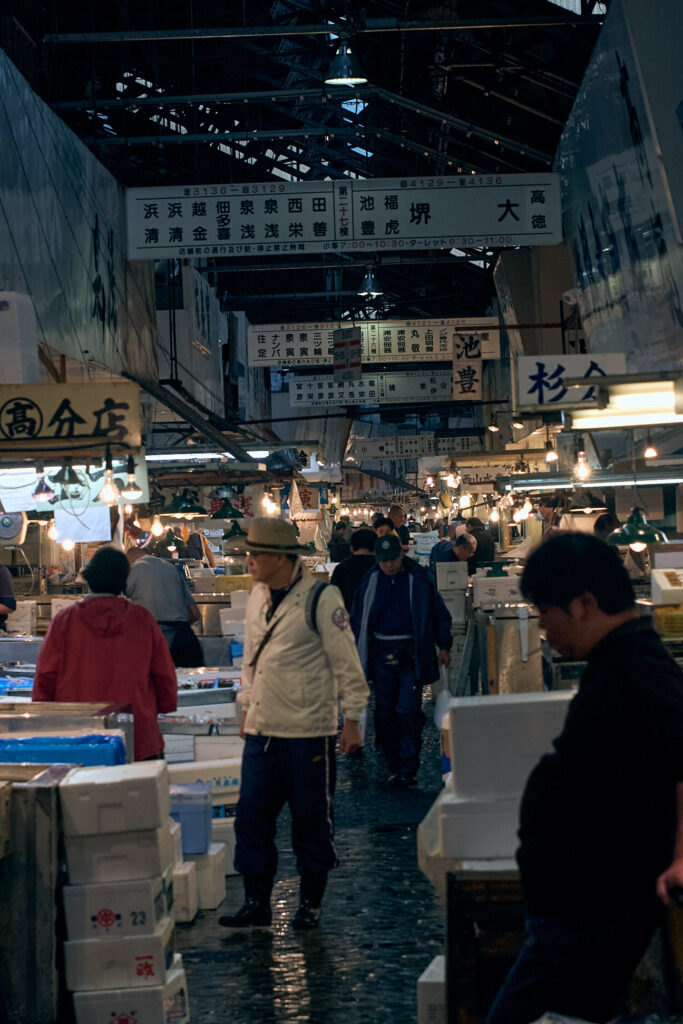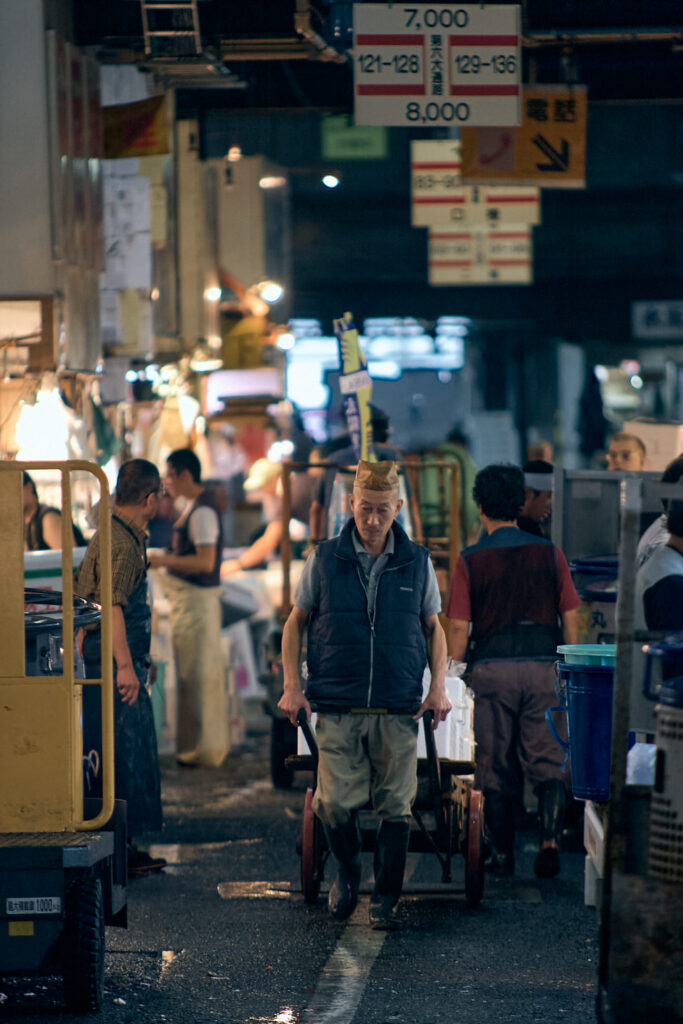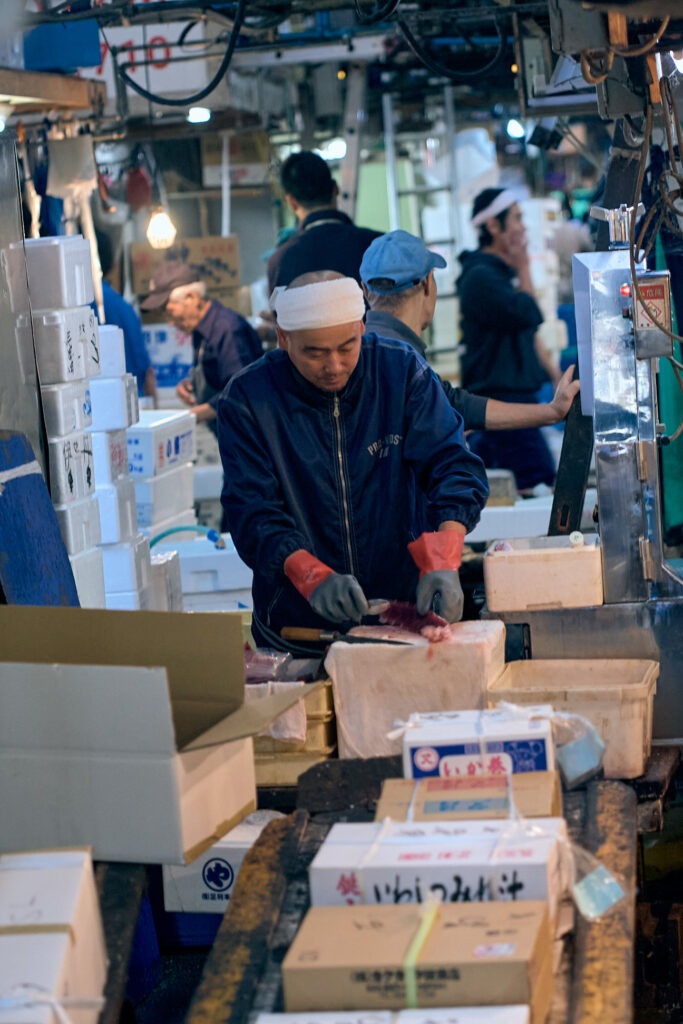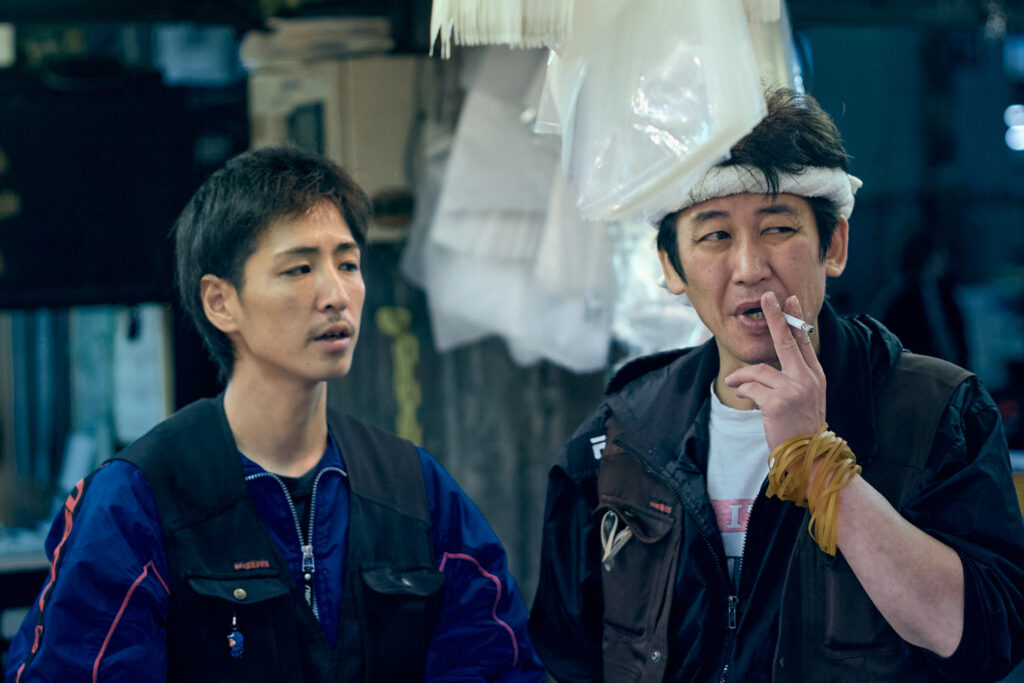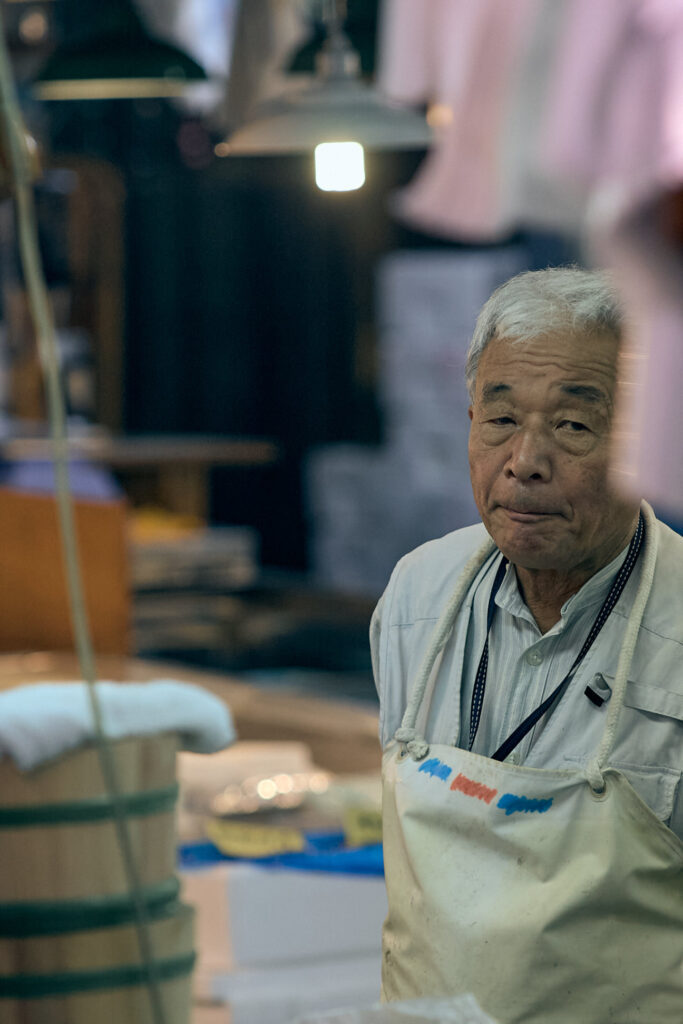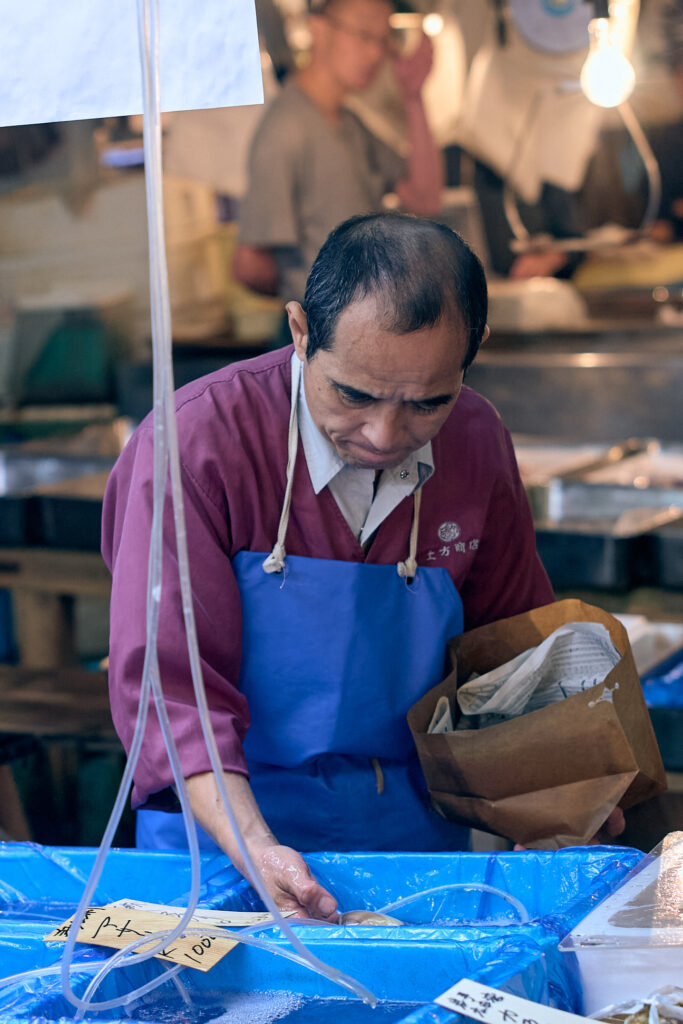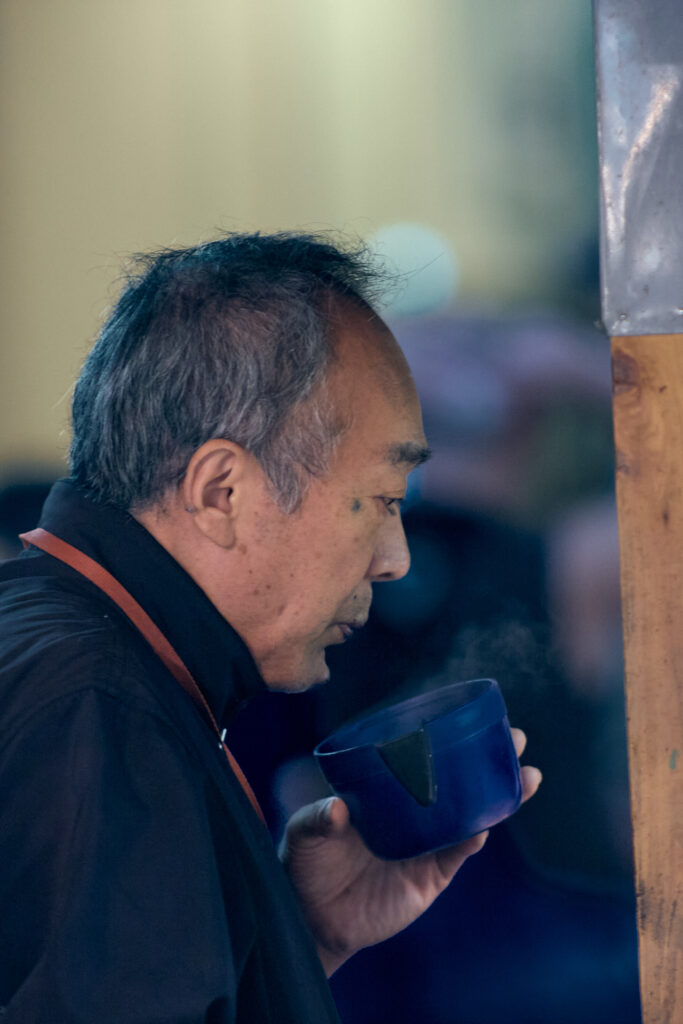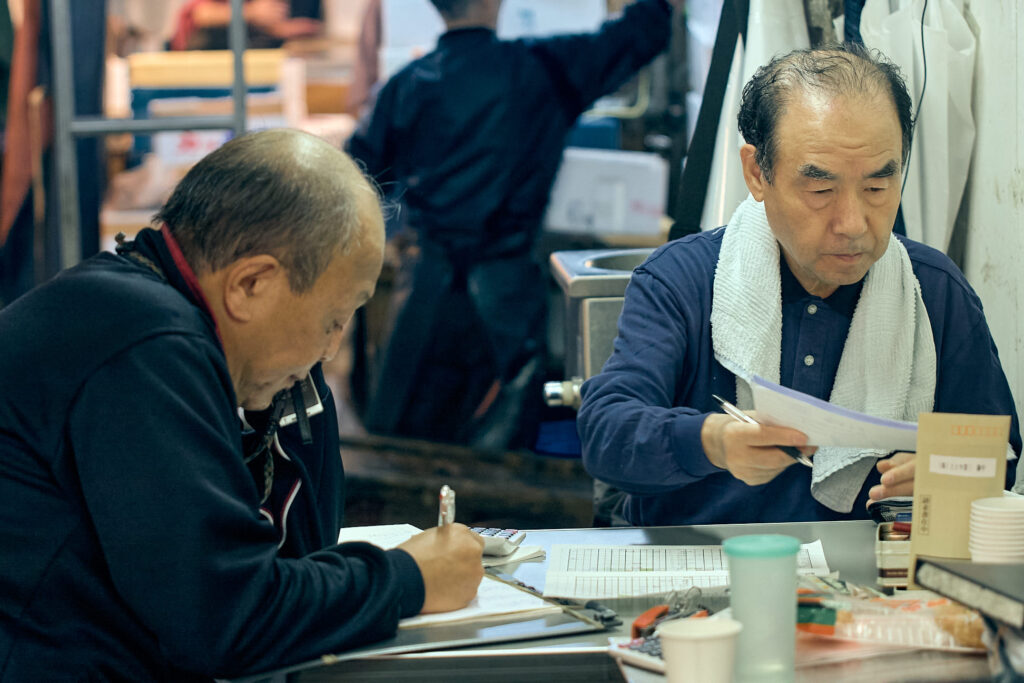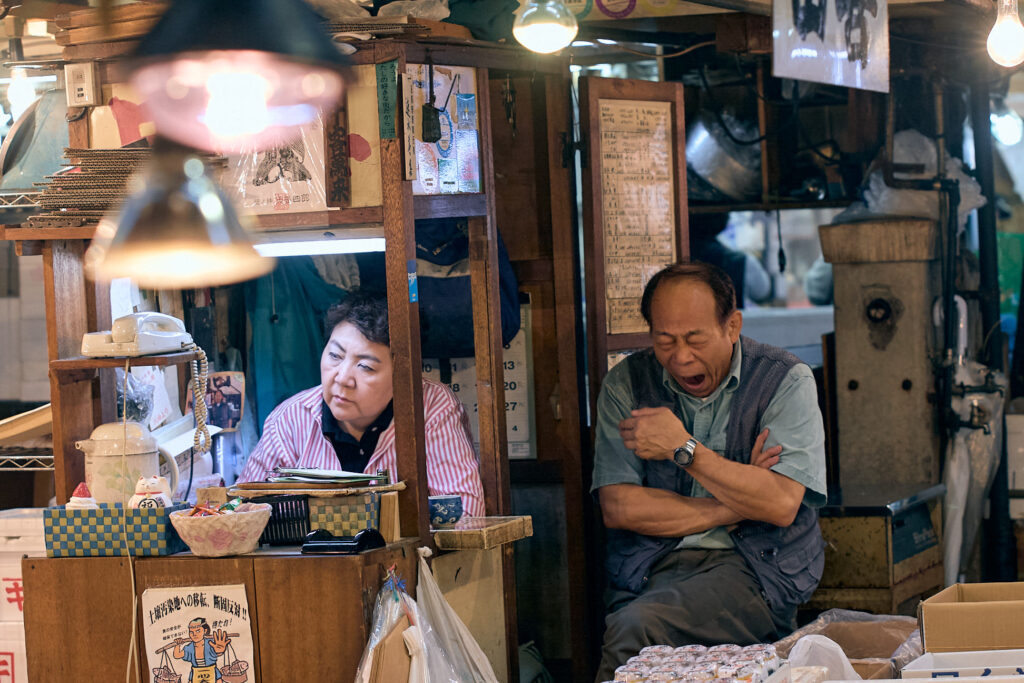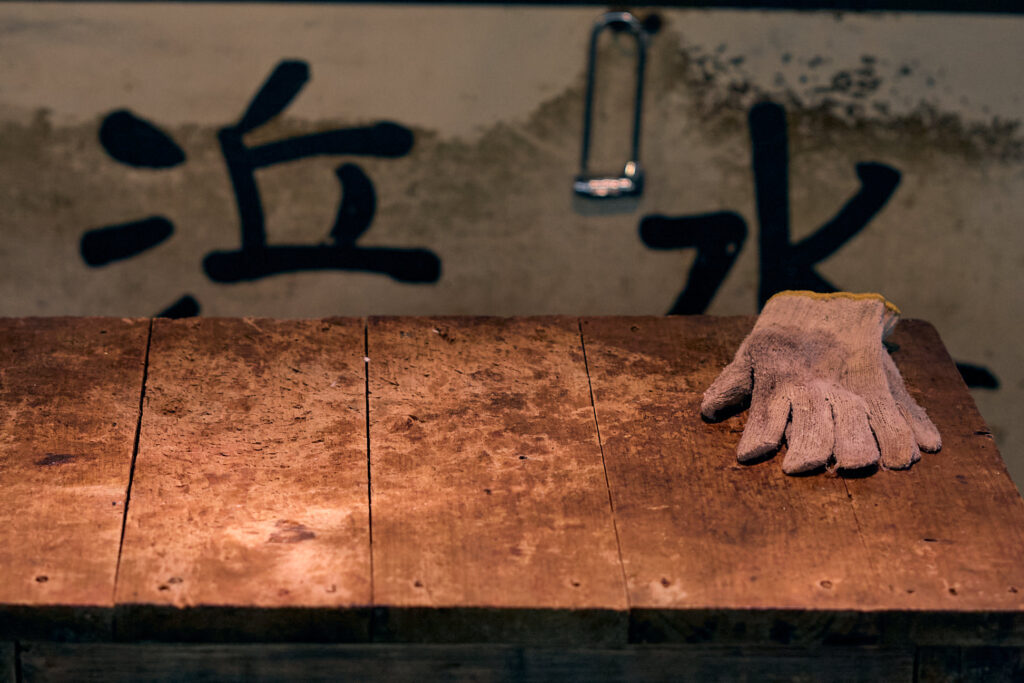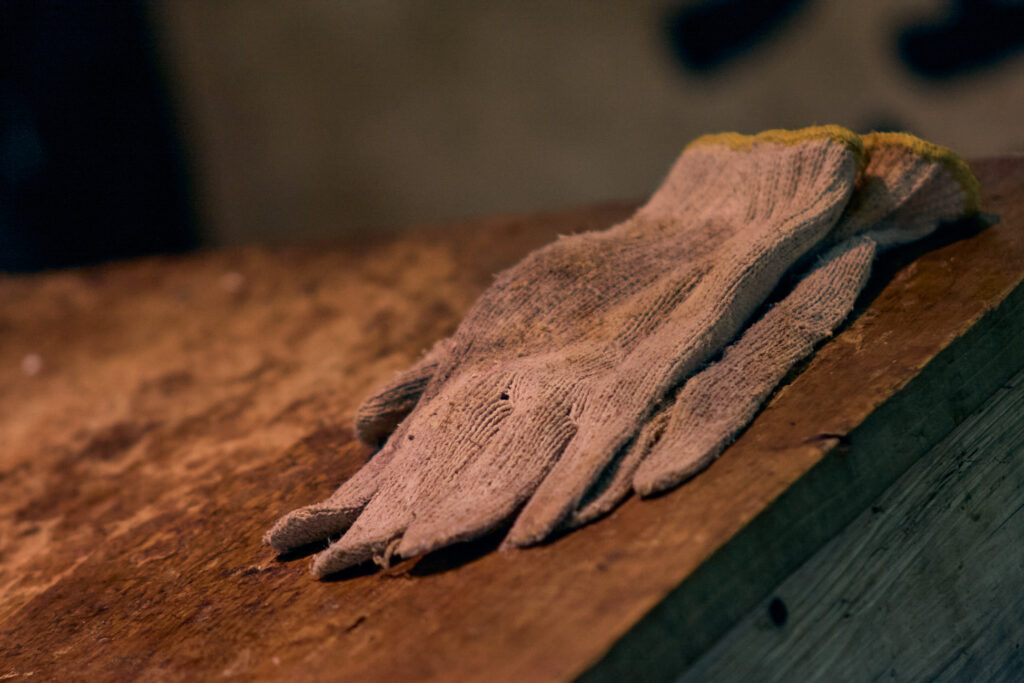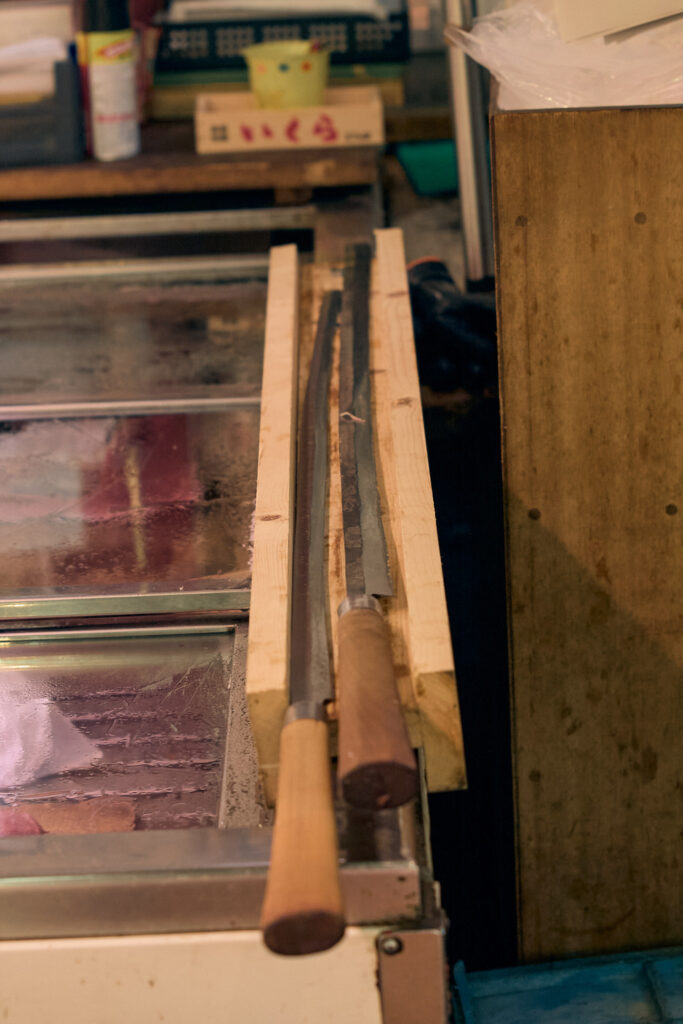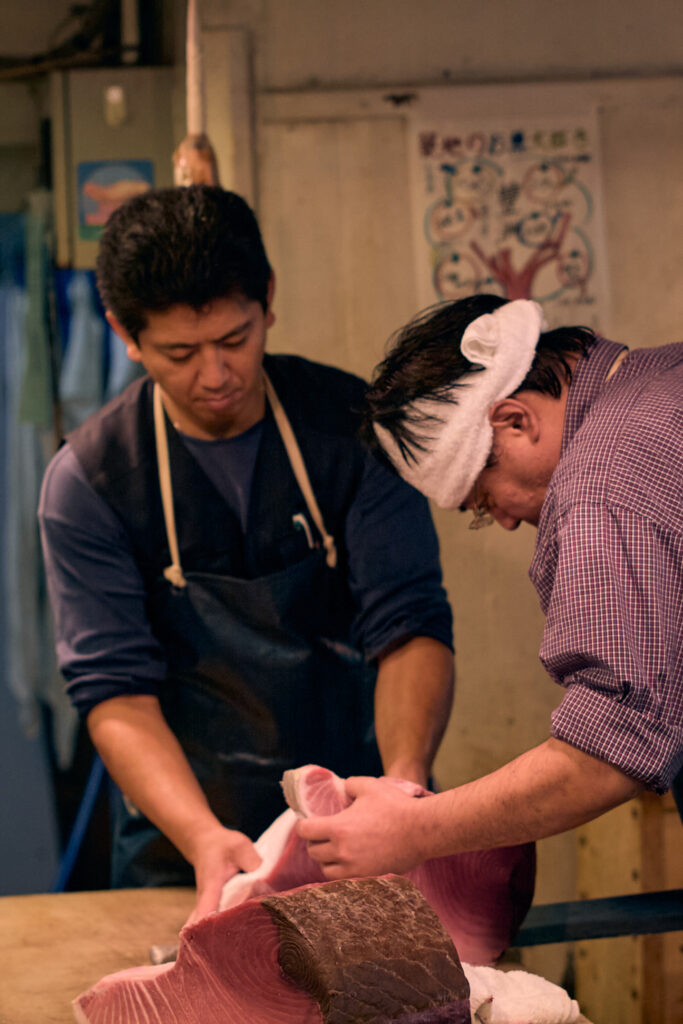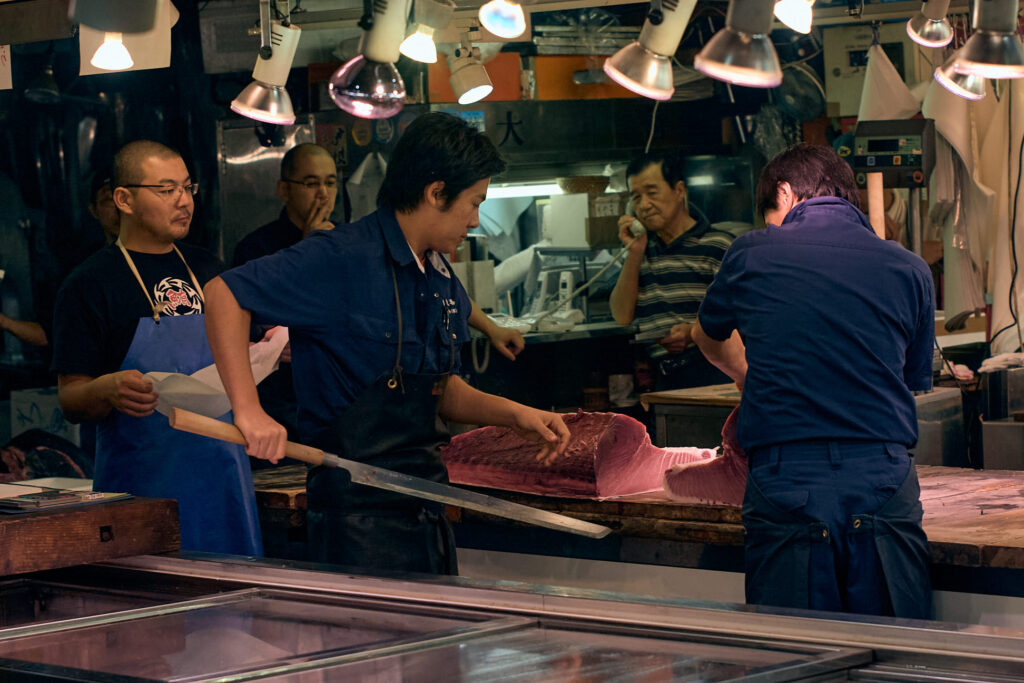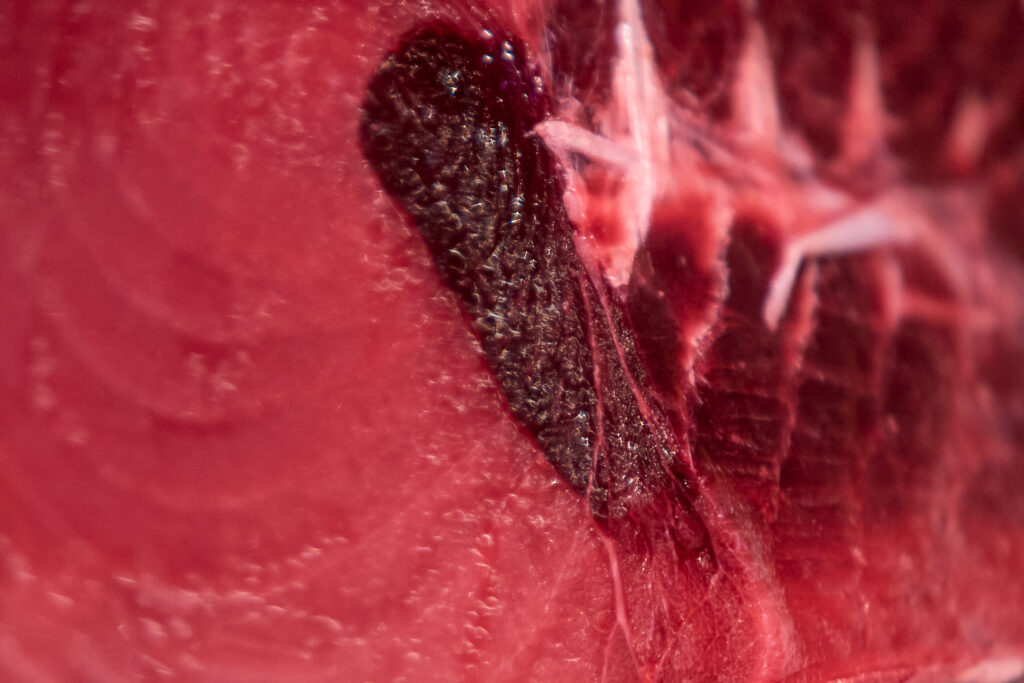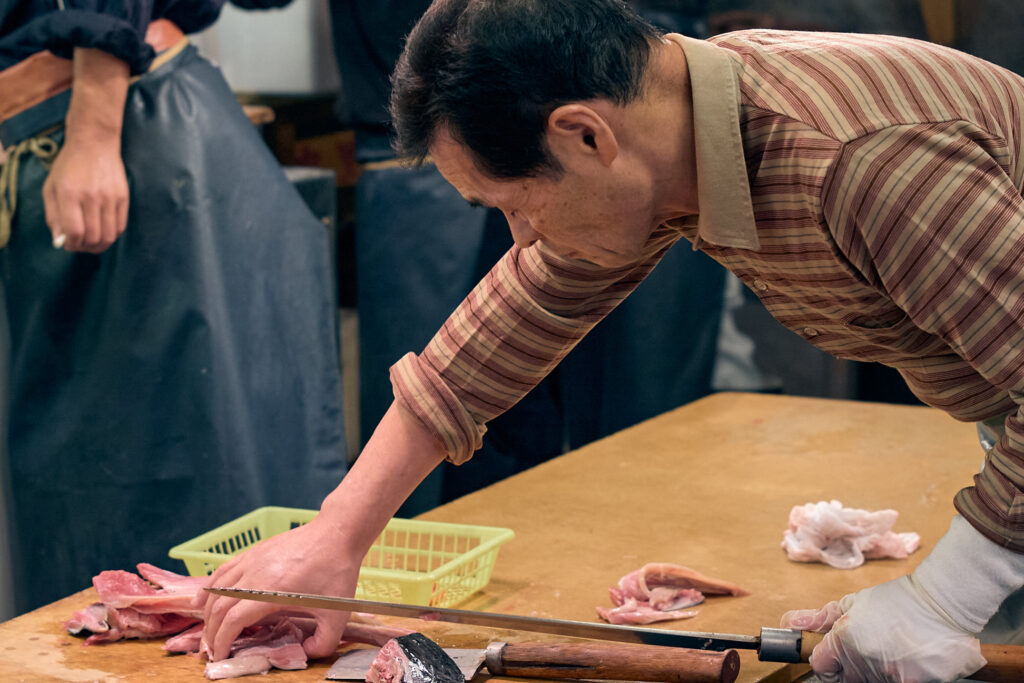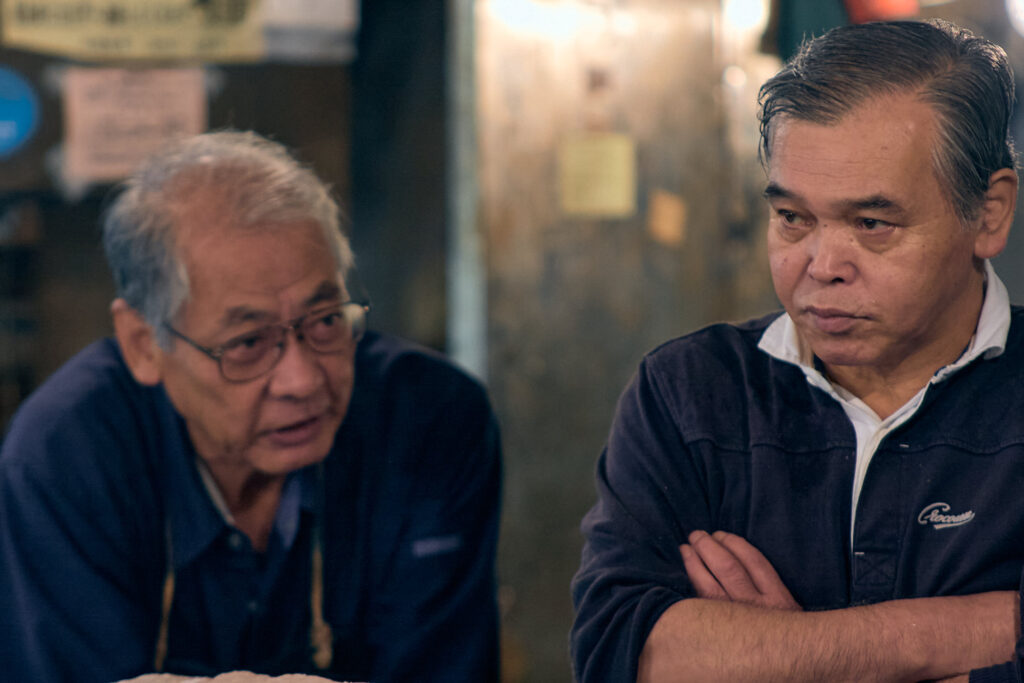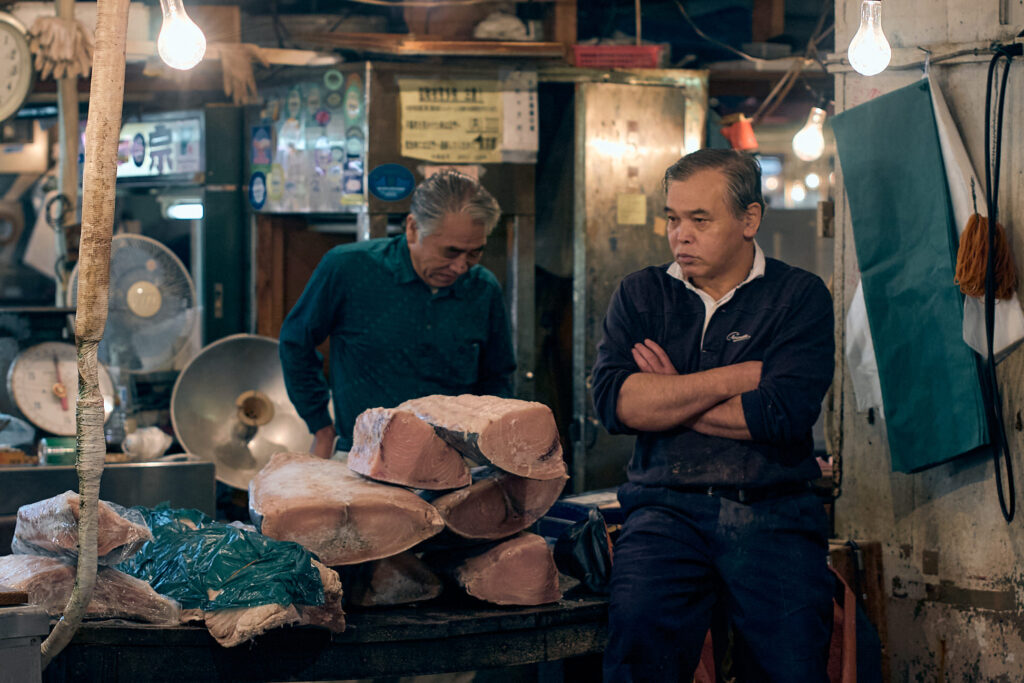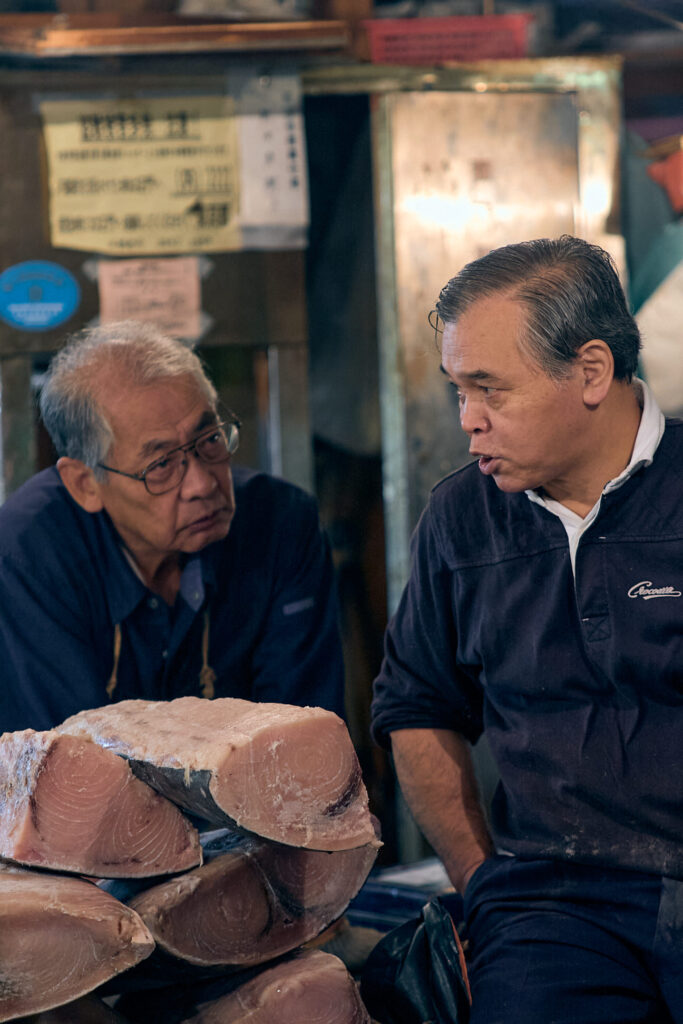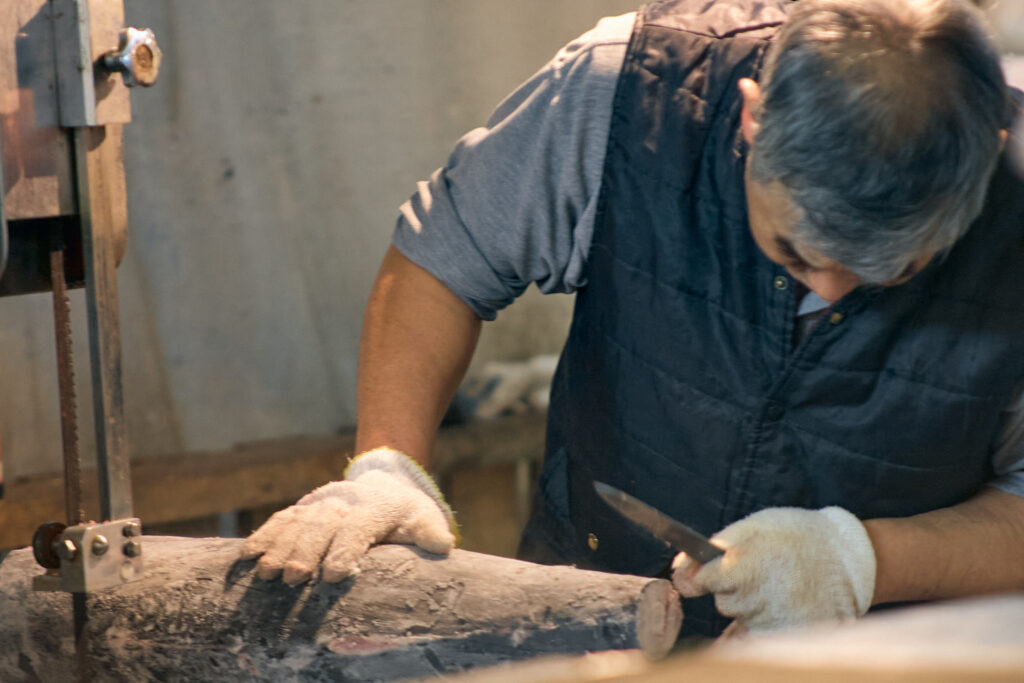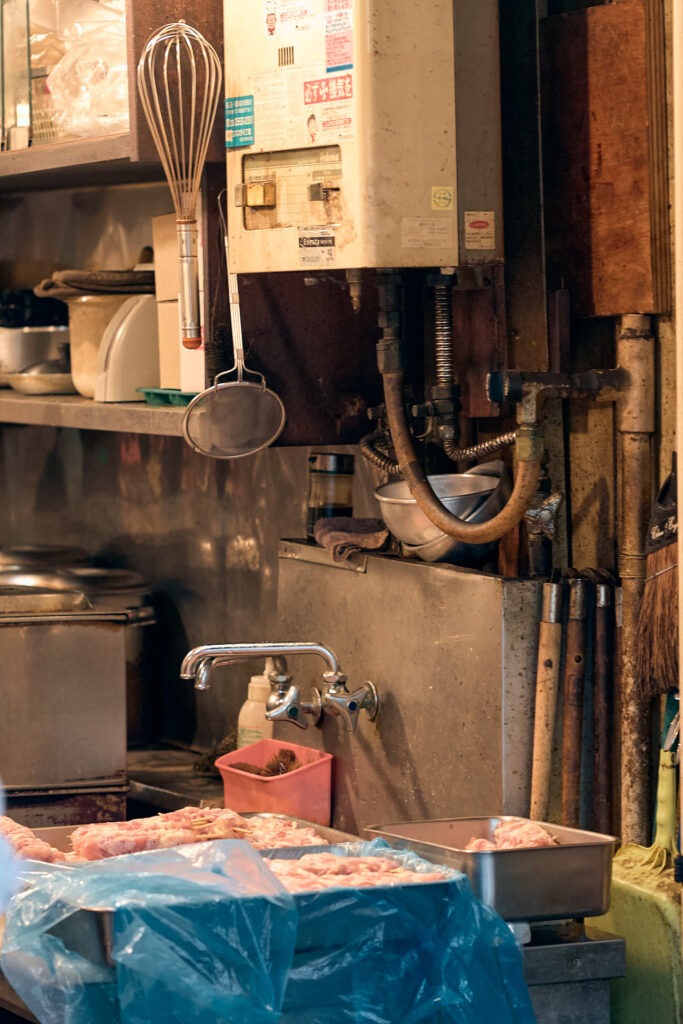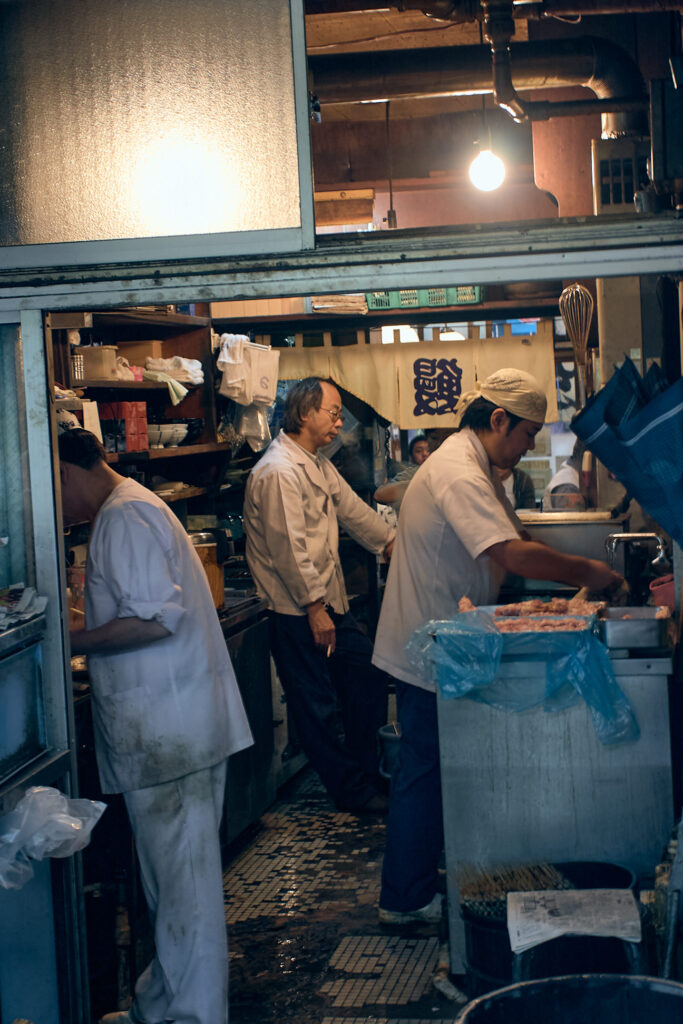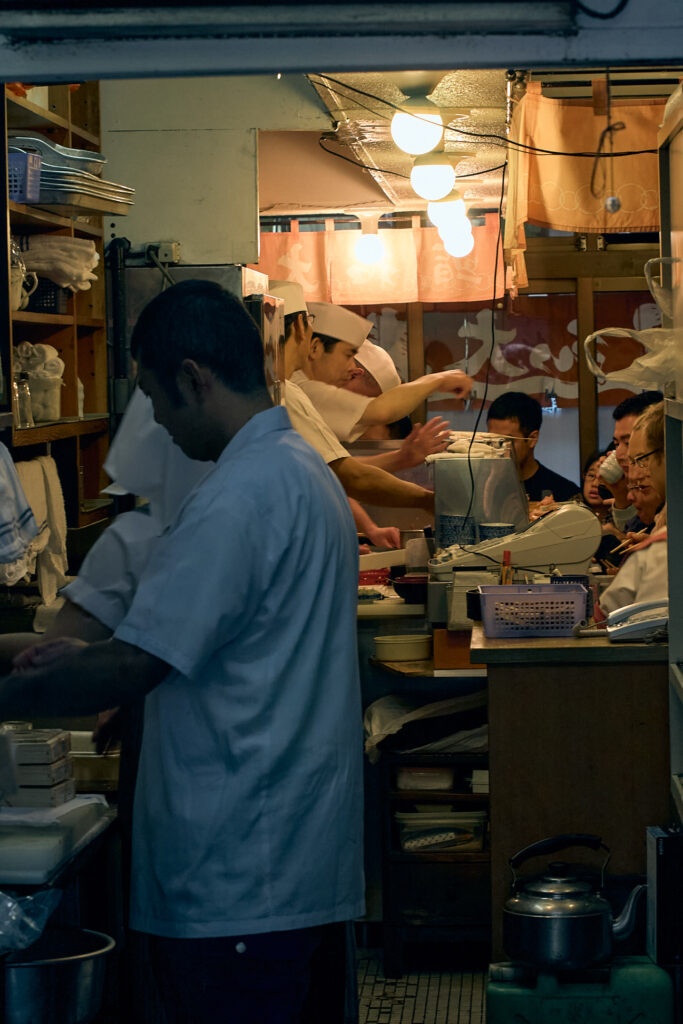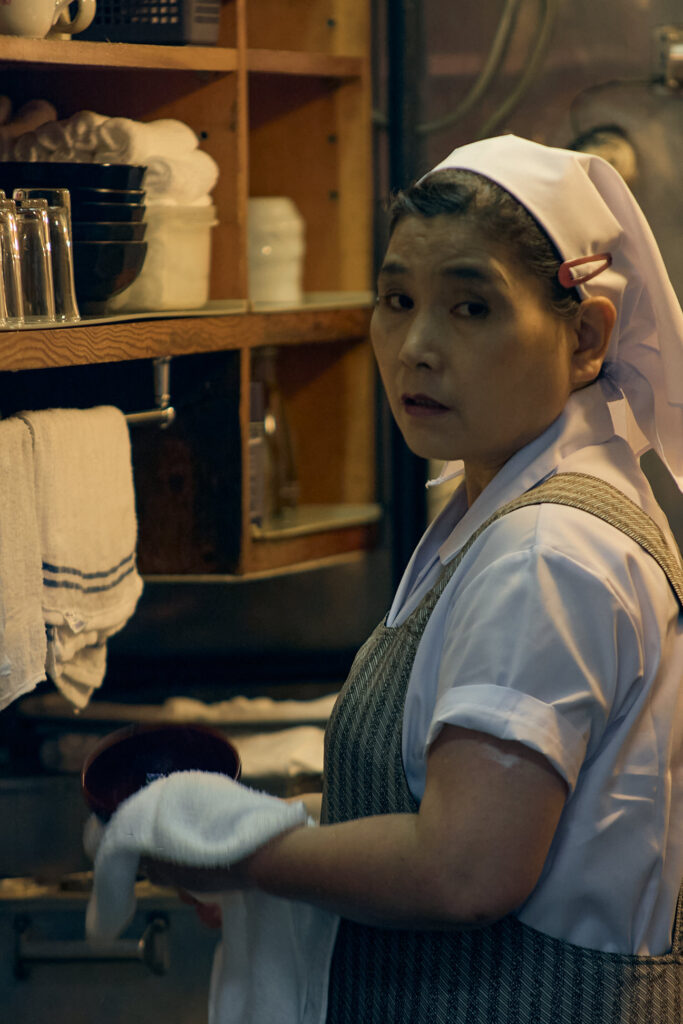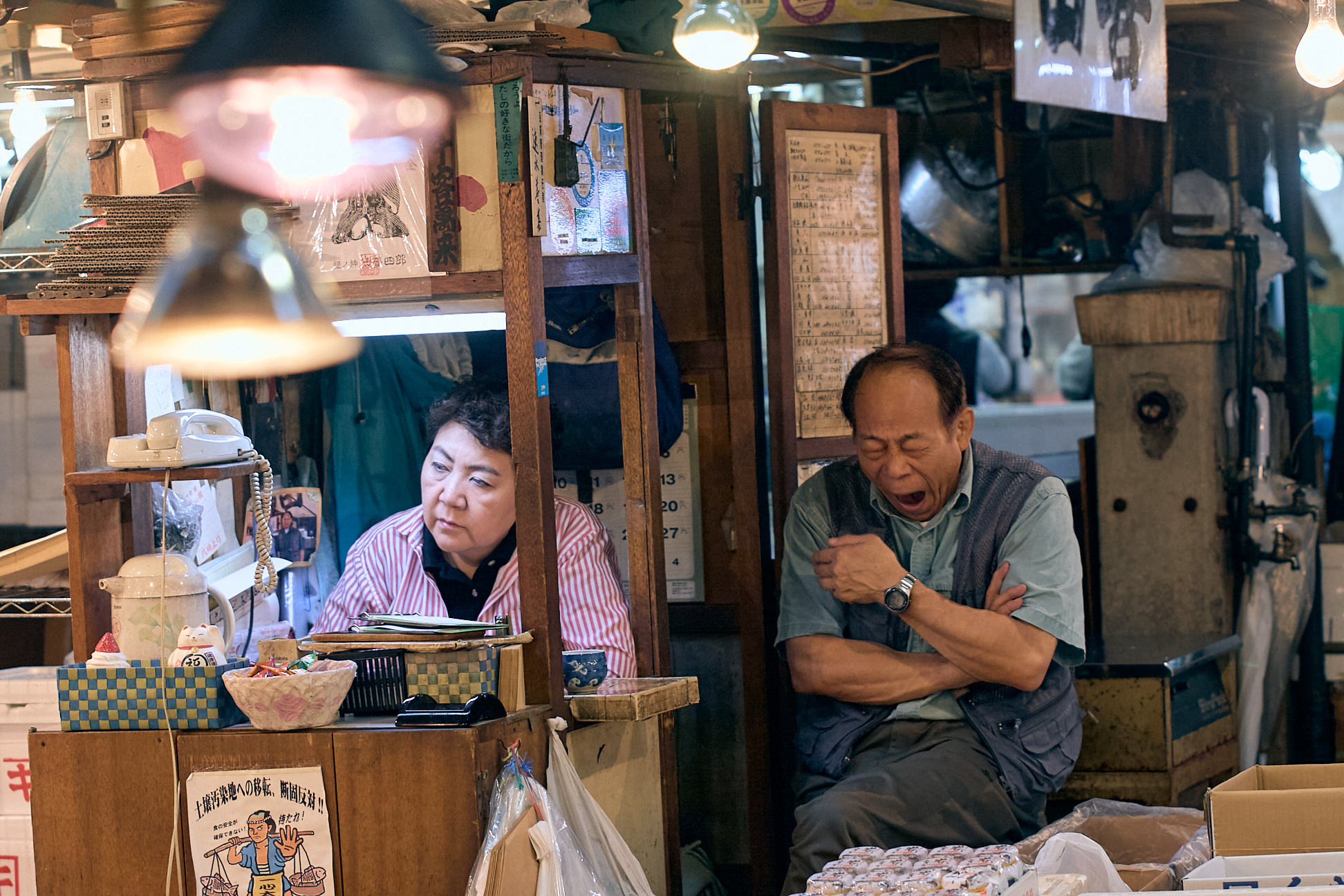
Echoes of Tsukiji: Tokyo’s Vanishing Culinary Fortress
I arrived at Tsukiji as Tokyo was still rubbing sleep from its eyes. While some cities build monuments to gods or kings, the Japanese built this cathedral to seafood. By 2008, this market was already a living museum—a place that would, in just ten years, exist only in photographs and memory.
First Light at the Gateway
The market awakens long before most of Tokyo stirs. By 3 AM, trucks have already delivered their precious cargo from ports across Japan. At the entrance, weathered wooden signs and lanterns hang above narrow passageways, marking the threshold between ordinary Tokyo and this parallel universe of commerce. The alleyways seem to inhale as the first vendors arrive, exhaling steam from early morning tea and broth. Follow the most purposeful walkers—they know where they’re going—and listen for the first calls between old friends who see each other only in these blue hours before dawn.
The Keepers of Tradition
The old man with his purple cup stands like a sentinel at the edge of time. He doesn’t pose for my camera; he probably doesn’t even notice it. His gaze drifts somewhere beyond the present moment, perhaps to the thousands of identical dawns he’s witnessed in this same spot. The weathered hands that hold his cup have likely prepared more fish than most people will eat in a lifetime. What secrets of the sea does he know? What changes has he witnessed as Tokyo transformed around him while his daily ritual remained constant? In his profile, I see not just a man but an entire vanishing world.
The Rhythm of the Market
Inside the narrow stalls, life unfolds with the precision of a well-practiced dance. A woman in pink stripes bends over her account book, tallying the day’s numbers while her companion gives in to an enormous yawn. One works, one rests—this is how Tsukiji breathes. Behind them, wooden cabinets hold decades of transactions, perhaps even handwritten notes from deals made with the grandparents of today’s customers. Their little shop is more than a business; it’s a time capsule stuffed with the ordinary magic of commerce. I wonder how many family stories are hidden in those wooden drawers, how many fortunes made and lost, how many recipes born from whispered recommendations.
The Tools of the Trade
Look closely at any stall and you’ll spot tools you won’t find in ordinary kitchens. Specialized knives with blades curved precisely for specific fish hang from magnetic strips, their handles worn smooth by decades of use. Wooden mallets for stunning live fish before preparation rest beside scales so accurate they can measure the value of a single shrimp. Ice crushers, sorting baskets woven from bamboo, and hand-painted price tags create a museum of functional objects perfected through generations. These tools aren’t mass-produced; they’re often made by craftsmen who serve only the market community. When a vendor retires, these implements pass to apprentices like sacred objects, carrying with them techniques no manual could capture.
The Dance of the Tuna
The tuna cutters move with the focus of surgeons. Their knives—passed down from master to apprentice, sharpened daily against stones worn smooth by generations—transform giant fish into precise cuts with movements so practiced they seem almost casual. But there is nothing casual about the concentration in their eyes. Watch carefully and you’ll see that each cut follows invisible lines only they can see, guided by knowledge no book could teach. In ten minutes, they accomplish what would take an ordinary chef hours, turning nature’s raw material into Tokyo’s dinner. These aren’t just workers; they’re artists whose canvas happens to be edible.
The Council of Judgment
Two men stand before slabs of tuna, their posture telling a story words never could. One examines the cut flesh while the other watches with arms folded across his chest. No words pass between them because none are needed. They’ve been making these same judgments since before many of Tokyo’s skyscrapers existed. Their subtle nods and frowns determine what makes the grade and what doesn’t. In their silence, they control the fate of fishermen’s catches and chefs’ menus across the city. Power in Tsukiji doesn’t announce itself with badges or uniforms—it’s visible only in the quiet authority of men like these, who can tell a fish’s life story from the color of its flesh.
The Hidden Breakfast Counters
Behind the commercial stalls lies another Tsukiji—one where market workers and in-the-know Tokyoites gather at tiny counters for what might be the freshest breakfast on earth. These cramped eateries, often with just six or eight seats, serve fish that was swimming hours earlier. Chefs who’ve been awake since midnight prepare sushi with hands moving too fast to follow, placing each piece directly on the wooden counter before you. No reservation apps or tourist lines exist for these spots—you’re either part of this world or you’re not. The steam from miso soup fogs eyeglasses and camera lenses, while conversations flow in the shorthand dialect unique to market workers. Here, a simple nod to the chef might bring you something not on any menu, prepared in a way you’ll never see in guidebooks.
The magic of Tsukiji lies not just in what you can see, but in what remains invisible to casual visitors—the countless unwritten rules, the expertise built over decades, the trust established through thousands of handshakes. I captured these images in 2008, when this world still stood intact. By the time you read this, progress will have marched forward, clearing away much of what you see in these photographs. But for one morning, I walked through this living museum and caught glimpses of a Tokyo few tourists ever truly saw.

